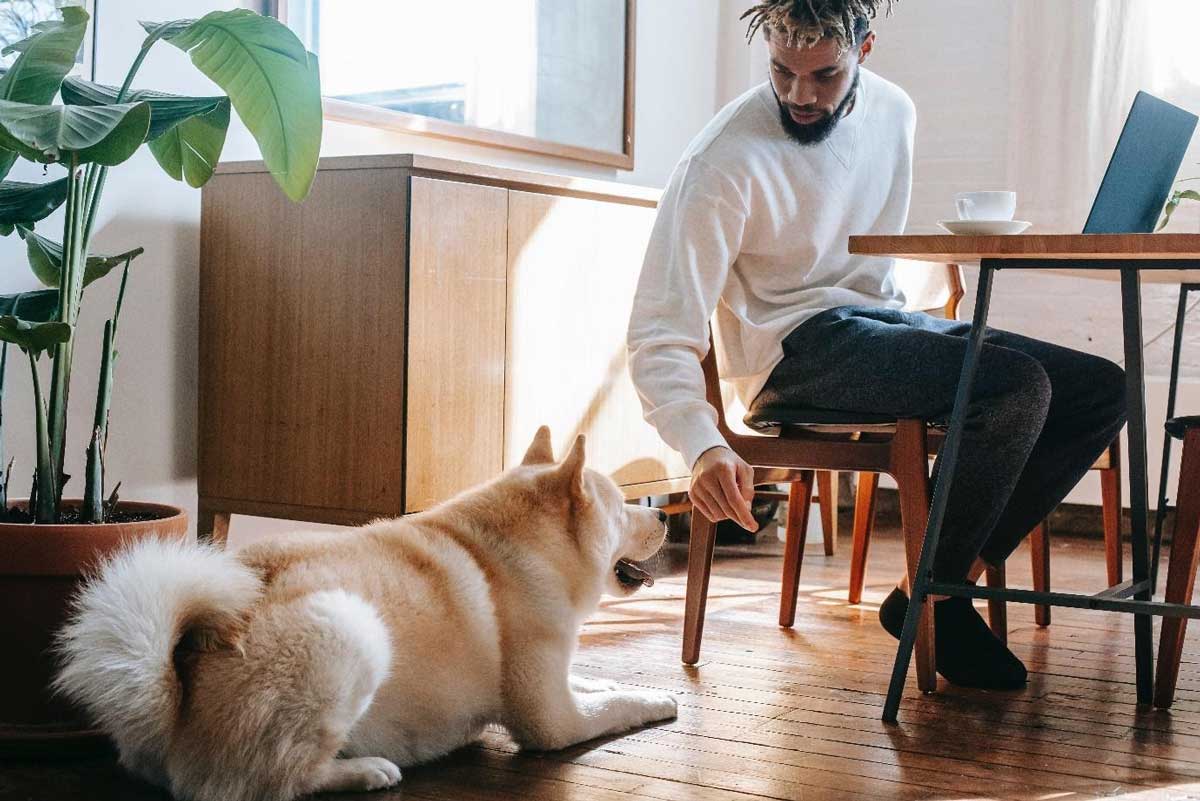Most people with dogs know that it can be a little difficult to change a dog’s habits once they have been established. That being said, every now and then, you’ll need to replace your dogs bed due to wear or multiple other reasons.
Or, you may need to introduce your dog to sleeping on a bed to begin with, such as when you initially adopt a dog. This article is to assist you with introducing your beloved pooch to a new bed, and getting them to actually sleep on it.
Of course, the first thing to know is that it may take a while to get the new bed to become part of your dog’s territory. It will require patience on your part in order to make this happen. However, as long as you approach the process with the idea that eventually, you’ll be successful and have a happy dog for it, it will make it that much easier for both of you.
It Needs To Smell Like Their Favorite People
When you are introducing something new to your dog, it is important that it smells of your dog’s favorite people- you and your family! You and your family mean everything to your dog, so if a new item doesn’t smell like you, it doesn’t smell like comfort and home to your dog.
Introduce your scent to the new item. Or, in the case of introducing a bed, try placing one of your shirts on the bed so that your dog will come and smell your familiar scent on the bed, and know that the bed is a warm and welcome place for them.
Where Are They Happiest?
Where does your dog normally lay down to sleep in your house? The easiest way to introduce a new bed is to place it in the area that they normally sleep. Of course, if you’re trying to move the room that they’re sleeping in, it can be a little trickier.
However, if you just want to give them a bed to sleep on, try placing the bed in the area that they normally sleep. Once you’ve established a familiar smell on the bed and slipped it into their sleeping area, it shouldn’t be difficult for your dog to pick up on the fact that this is their new, comfortable bed.
If You’re Switching Out Bedding…
If you’re simply swapping out one bed for another, sometimes it can be a quick and easy transition, but other times, your dog may not care for the change to their territory. Honestly, it all depends on the dog. A lot of times, if you can take a blanket from their bedding and place it on the new bed, it can help to ease the transition.
If your dog still doesn’t care for the new bed after you transfer their other bedding items, double check the bed itself. Is the material bothersome? Is it shaped comfortably for your dog? Does the material get really hot, or feel like it wouldn’t warm up easily? If the bed doesn’t feel comfortable to you, it probably doesn’t feel very comfortable for your dog, either.
Try Giving Rewards
If your dog still isn’t warming up to the new digs, try rewarding them when they get into the new bed. Give treats or praise every time you see them sniffing around and testing the new bed, and they will learn to affiliate the new bed with those awesome rewards.
Of course, you don’t want to overdo the treats, but the positive reinforcement of praising them when they are in their new bed can never be overdone. As long as you’re helping them to associate the bed with great feelings, they will want to be in the bed.
Try Directing Them To It
If your dog is really good at taking your lead when he is on a leash, then use the leash to help you direct your dog to his new bed. Put your dog on his leash, then give him a brief walk around the room that his new bed is in. Gently lead him over to his new bed. Let him give it a good sniff, and encourage him to get on his new bed. It will probably help if you get down at eye level, or even down on the floor with him. Show him that his new bed is for him to lay down and relax on.
Be Sure Your Dog Has A Sleep Routine
You may be missing your dog actually going and climbing onto his bed because he isn’t on the sleep routine that you are on. Before bed, you should take your dog for a walk to get his extra energy out. Once that happens, you should avoid giving your dog any additional stimulation, such as eating, drinking, or playing.
Don’t leave the lights on in the room that your dog is sleeping in. Wherever his spot to sleep has become, accommodate him and make it a dark and comfortable area for him. Some dogs like to be right beside their family when they sleep. If that is the case, then be sure to place his new bed beside your bed, that way he can comfortably sleep in his bed without getting up to come and check on you throughout the night.
If Climbing Into Your Bed Is The Problem…
It is important that you don’t let them onto your bed at all if you are not permitting your dog to sleep with you. Otherwise, it will confuse your dog that they are only allowed to be on your bed at certain times.
If your dog is not permitted to sleep on your bed, any time they try to climb onto your bed, you should tell them “no” in a firm voice, and gently assist them in getting off of your bed. The answer is not to spank them, or to yell at them. That is only going to frighten and confuse your dog. It will not teach your dog not to climb onto your bed, it is only going to make them afraid of you.
A Story Of Success
When my own puppy, a beautiful beagle rescue, came into my home, she was very small and quite afraid of people and wide open spaces. She found her comforting spot was inside my closet, nestled on the throw pillows that I removed from my bed at night to sleep.
I put a blanket over those pillows for the first night, and the next night, I moved a nice soft bed into that spot in the closet. She didn’t immediately want to get into her bed, however, she was only 6 weeks old, so she was pretty easy to pick up and place into the bed.
She only climbed out the first three or four times, and I gently placed her back into her bed and put her blanket and one of the pillows into her bed with her, and she slept pretty soundly after that. She has been sleeping in that bed happily for the past two years, right in that very spot in the back of my closet.
I allow her to sleep on my bed whenever she chooses to, but she likes the safety and quiet peace that she finds in the closet. She is still very shy with humans, so when she is feeling uneasy with people, she will retreat to her bed in order to collect herself and listen to the action without feeling as though she is exposing herself.
The key is to ensure that your dog isn’t in a place where they feel exposed and that they don’t own the space. Your dog’s bed is a part of their territory. If they don’t feel as though the place where their bed is set up is their territory, they are very unlikely to want to sleep in the bed.
That’s why it is so important to ensure that it is low traffic, quiet area where they aren’t going to constantly be woken up every time they try to sleep. It shouldn’t be near small children who may try to interrupt their sleep or place toys in their bed. It shouldn’t be near the entry of the home if you have a lot of visitors.
Try to keep your dog on the same sleep schedule that you have. This way, when the lights are turned off for the evening, your dog understands that everyone is going to retire for the night, so it is time for them to retreat to their bed, as well.
You can tell them “go to your bed” as you lead them to their bed so that they begin to understand the command. It should start to become an automatic response for your dog in just a short amount of time. Make sure that you praise them when they follow the “go to your bed” command.














